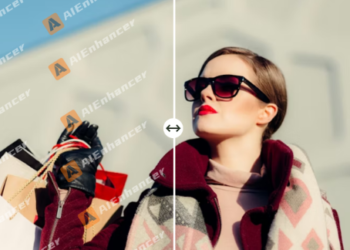A sleek design has become a daily requirement rather than a luxury in the landscape of online businesses and personal branding. It doesn’t matter whether it’s for a social media manager or a small company; thousands, if not millions, of people need slick, professional-looking graphics to keep their content flowing. But while not everyone has the skills or time to master design software, one platform has made it accessible – and quietly created a booming new economy in the process.
Welcome to the Canva hustle, where digital creators are turning pre-made templates into a steady source of income.
The Rise of the Template Economy
Canva, launched in 2013, was designed to make graphic design simple for anyone. With its drag-and-drop interface, ready-to-use fonts, and image library, it quickly became the go-to platform for people who wanted professional-looking results without hiring a designer.
Over the past few years, however, Canva’s user base has expanded far beyond casual users. More than 170 million people worldwide now use the platform, and with that growth has come a new opportunity. Creators have begun designing and selling their own Canva templates – ready-made layouts for everything from Instagram posts to business presentations – on digital marketplaces.
For many, this has become a profitable side hustle or even a full-time business. On sites like Etsy, Gumroad, and Creative Market, thousands of sellers now offer Canva templates tailored for specific niches such as fitness coaching, real estate, weddings, and online education. Some sellers report earning several thousand pounds per month, simply by creating designs once and selling them repeatedly.
On marketplaces where these templates are sold, creators encounter a wide spectrum of online content discussions – ranging from digital marketing trends to topics such as matched betting – reflecting the broad mix of subjects that circulate within online entrepreneurial communities.
Why Templates Work
The appeal of Canva templates lies in the blend of simplicity and scalability. Businesses, influencers, and freelancers all want content that looks consistent, professional, and on-brand, but few have the resources to hire a designer for every social post or email header. Templates bridge that gap perfectly.
Buyers get ready-made designs that can be customised within minutes, while sellers benefit from the ability to create a single digital product and sell it over and over again. This makes templates one of the few creative assets that can deliver truly passive income.
There is also the speed factor. Online engagement relies on constant visual updates, and that’s where ready-made templates come in, helping users maintain output without sacrificing quality. A well-designed pack can include dozens of matching graphics, ensuring an entire content calendar is sorted in one purchase.
The Business Behind the Graphics
Building a successful Canva template business is not as effortless as it may appear. Successful sellers treat it like any other digital product venture, combining creativity with research, marketing, and customer care.
Many start by identifying gaps in the market. For example, a designer might notice that small skincare brands struggle to find minimalist, neutral-toned templates that match their aesthetic. By catering to a specific audience rather than a general one, sellers can stand out from the crowd.
Next comes the visual strategy. Template creators must ensure that their designs are both stylish and adaptable. Buyers expect to tweak colours, swap images, and insert their own branding easily. The best templates are built with flexibility in mind, allowing both beginners and professionals to use them with confidence.
Once designs are complete, presentation is key. Sellers create mock-ups to showcase how templates look in use, often displaying them on phones, laptops, or social feeds to help potential buyers imagine their results in every mode that they require. These visuals can make or break a listing, especially on competitive marketplaces.
Finally, pricing plays a crucial role. While some creators sell single packs for under £10, others bundle extensive collections or offer business licences for larger companies. The diversity of pricing structures means the market caters to both hobbyists and entrepreneurs alike.
From Side Hustle to Brand
For many designers, Canva templates are no longer just a quick income stream. They have evolved into full-scale brands. Some creators build entire websites around their template businesses, complete with newsletters, video tutorials, and free downloads to grow an audience. Others use social media to showcase design tips or style guides, positioning themselves as experts in digital branding.
The rise of social commerce platforms such as TikTok Shop and Instagram Reels has also accelerated this trend. Short videos demonstrating “before and after” transformations using templates regularly go viral, attracting buyers who want instant visual upgrades for their own content.
Interestingly, the Canva economy has also spawned new roles within the creator industry. Virtual assistants, marketing consultants, and small agencies now use templates as part of their workflow, helping clients maintain cohesive branding at a fraction of the cost. In this sense, Canva has not just made design easier – it has democratised it.
The Future of Digital Design Commerce
Canva continues to release new features such as AI-assisted design and advanced collaboration tools, making it even easier to produce and customise templates.
Meanwhile, customer expectations are evolving. Buyers increasingly seek templates that are not only visually appealing but functional, too, such as social media planners or interactive e-books. This has pushed template sellers to think beyond aesthetics and into the territory of user experience and brand storytelling.
Ultimately, the Canva hustle represents something larger: a shift in how creativity and commerce intersect. It has turned design into a shared language that anyone can participate in, regardless of training or budget.
David Prior
David Prior is the editor of Today News, responsible for the overall editorial strategy. He is an NCTJ-qualified journalist with over 20 years’ experience, and is also editor of the award-winning hyperlocal news title Altrincham Today. His LinkedIn profile is here.












































































